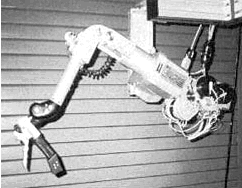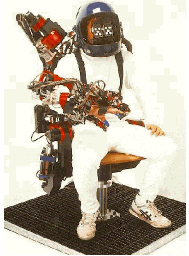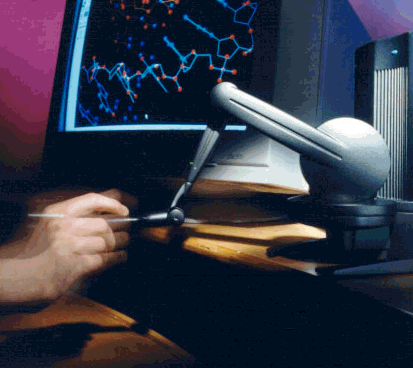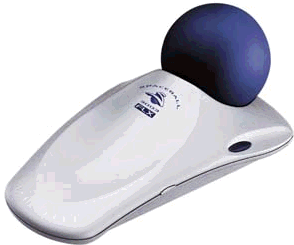|
|
Telerobotics
|
 |
This is a 1970's era manual
controller developed for controlling robots operating in
radioactive environments. This controller is roughly the
size of a human arm. At the back of the controller you
can see a number of black disks. These are electric
motors. These electric motors provide the energy to feed
forces back to the operator. These forces are
proportional to the current in the robot's motors which
in turn are proportional to the forces being experienced
by the robot. The placement of the motors at the back of
the controller provides perfect counter balancing. The
motors drive the robot joints with almost no friction
via metal tape. Developed 40 years ago and without any
computer control, I believe this controller works as
well or better than any human-arm scale controller
available today. |
|
|
|
This is an example of full immersion
telecontrol. This guy has an
exoskeleton around his arm, hand, fingers and head. He
is controlling a force-reflecting 9-degree-of-freedom (DOF) hand coupled to a
force-reflecting 7-DOF arm. The hand/arm combination is mounted on a 3-DOF torso that extends the work volume of the manipulator system. A 3-DOF head that holds a stereoscopic pair of TV viewing cameras is also mounted on the torso.
The helmet holds a 3D display and motions of the
operator's head control the robot's head. I'm not
too sure what to say about this one as I've never tried
a system like this. I will say that it is definitely not for the claustrophobic
operator! The overall system was developed and integrated by SSC San Diego. The manipulator (hand/arm/torso/head) was developed in conjunction with Sarcos
Research and the Center for Engineering Design at the University of
Utah. The vision system uses technologies developed by Wright-Patterson Air Force Base and Technology Innovation Group. |

|
|
|
 |
The picture at left shows the
commercial version (called Phantom) of a manual
controller developed by MIT. This is my
favorite scale of manual controller. I believe that
humans can achieve their best precision with just small
movements of the wrist and hand. Because the controller
weighs very little, it can feed back forces with
a very high bandwidth - even to the point where the
operator can actually "feel" textures. By stressing design principals of low
mass, low friction, low backlash, high stiffness and good
back-drivability,
this system is capable of presenting sensations of contact, constrained motion, surface
compliance and surface friction. |
|
|
|
The device at right is called a
SpaceBall. It has three independent force sensors and
three independent torque sensors to provide the
requisite six degrees of freedom for arbitrarily
positioning a solid body in space. This controller was
developed primarily to give 3D designers the ability to pan, spin, zoom, rotate and analyze their
designs on the computer.
It also makes a quick, easy, intuitive and inexpensive manual
controller for robots. Just push or twist on the ball
and the robot's hand moves in a corresponding fashion. |

|
|
|
|
|